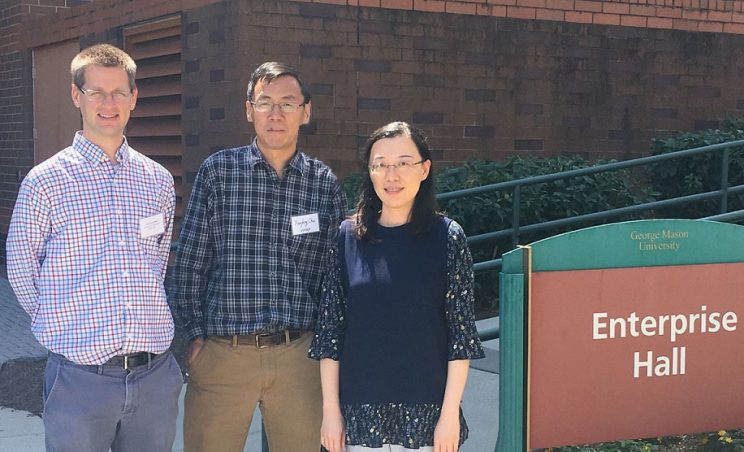ARL Weekly News – June 21, 2019
ATDD
LaToya Myles is co-author on a new research paper entitled “Developing scientists as champions of diversity to transform the geosciences” in the Journal of Geoscience Education. The paper describes National Science Foundation-supported professional development workshops, Geo Opportunities for Leadership in Diversity (GOLD) Institutes, which provided geoscience leaders with the tools and skills necessary to promote diversity, equity, and inclusion in their respective institutions. Citation: Kathleen Quardokus Fisher, Eric Kaufman, Oriana Calagna, LaToya Myles, Carolyn Brinkworth, Denise R. Simmons & P. Grady Dixon (2019) Developing scientists as champions of diversity to transform the geosciences, Journal of Geoscience Education, DOI: 10.1080/10899995.2019.1618692
Nebila Lichiheb is lead convener on a session accepted for the American Geophysical Union’s 2019 Fall Meeting. The session, Understanding atmospheric nitrogen exchange in coastal and estuarine ecosystems, seeks presentations on measurement techniques and modeling approaches allowing the evaluation of atmospheric nitrogen concentrations, ecosystem-atmosphere fluxes, and their impact on coastal and estuarine ecosystems. LaToya Myles, John Walker (EPA), and Kari A. St.Laurent (Delaware NERR) are also conveners.
HQ
Daniel Tong remotely gave an invited presentation titled “Drought and Dust Storms” at the National Drought and Public Health Summit held from June 17-19, 2019 in Atlanta, Georgia. This meeting was organized by NOAA and other federal agencies to help better identify the role that NOAA’s National Integrated Drought Information System (NIDIS) and its partners and stakeholders, along with other agencies, have in supporting and preparing the public health community for drought.
Beginning on July 16, Winston Luke will host Dr. Akane Yamakawa for approximately six months at the Air Resources Laboratory (ARL). Dr. Yamakawa is a Senior Researcher in the Center for Environmental Measurement and Analysis at the National Institute for Environmental Studies, an independent administrative agency of the government of Japan. Her field of specialty lies in the measurement and isotopic analysis of mercury and other heavy metals in the environment. Dr. Yamakawa is an expert in multiple mass spectrometry techniques for isotopic composition analysis of heavy metals, whose expertise as a field measurement expert and knowledge of mercury biogeochemical processes make her exceptionally well qualified to support activities central to ARL’s research in the measurement and modeling of mercury species in the atmosphere. Dr. Luke will meet Dr. Yamakawa at NOAA’s Mauna Loa Observatory (MLO) on the Island of Hawaii on July 16. There they will collaborate with MLO staff to install equipment to collect samples of atmospheric mercury species for the determination of their isotopic composition by mass spectrometry techniques. From there, Dr. Yamakawa will travel to the NOAA Center for Weather and Climate Prediction, where she will work in the ARL laboratory. Dr. Yamakawa will also participate in an upcoming field experiment, Fire Influence on Regional to Global Environments and Air Quality (FIREX-AQ) to determine emission factors and chemical processing of mercury compounds emanating from natural grassland and forest fires at a location in the Western United States, as part of her research sabbatical with ARL.
ARL’s Tianfeng Chai, Christopher Loughner, and Fantine Ngan attended the 23rd Annual George Mason University (GMU) Conference on Atmospheric Transport and dispersion modeling in Fairfax, VA, from June 18-20, 2019. They presented: “HYSPLIT Inverse Modeling” (Chai), “Evaluation of Recently Added STILT Features into HYSPLIT” (Loughner), and “Evaluating the Mixing Characteristics in HYSPLIT with Controlled Tracer Experiment” (Ngan).

Drs. Loughner, Chai, and Ngan. Credit: NOAA

